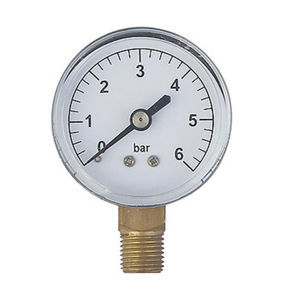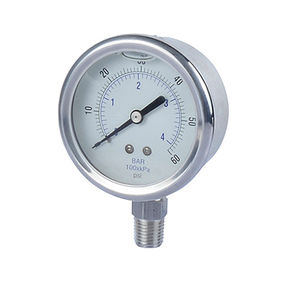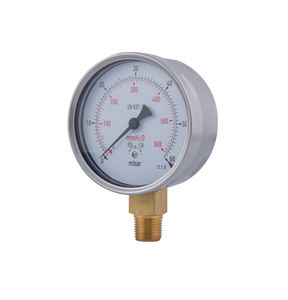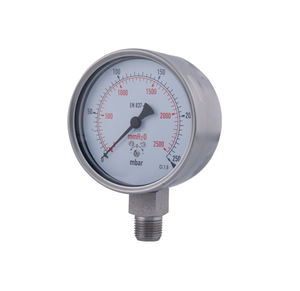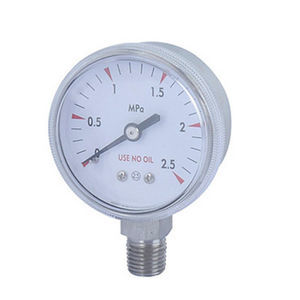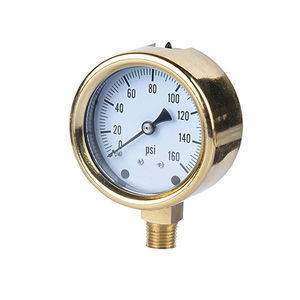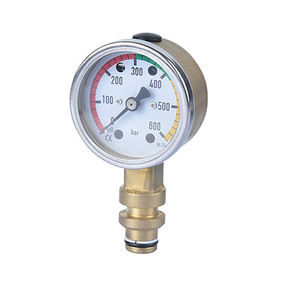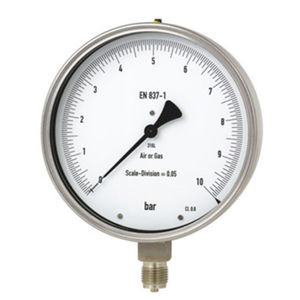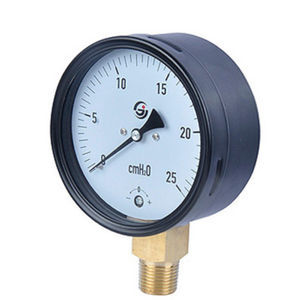
- Detection - Measurement
- Flow, Pressure and Level Measurements
- Dial pressure gauge
- Ningbo Konoo Instrument MFG. Co., Ltd.
- Products
- Catalogs
- News & Trends
- Exhibitions
Dial pressure gauge MCB-63Lbrassaluminumsteel


Add to favorites
Compare this product
Characteristics
- Display
- dial
- Material
- brass, aluminum, steel
- Technology
- diaphragm
- Applications
- for gas, calibration
- Other characteristics
- low-pressure
- Pressure
Max.: 1,000 mbar
(14.5 psi)Min.: -600 mbar
(-8.7 psi)- Precision
1.6 %, 2.5 %
- Dial diameter
63 mm, 75 mm, 100 mm, 160 mm
(2.5 in, 3 in, 3.9 in, 6.3 in)- Process temperature
Max.: 90 °C
(194 °F)Min.: -10 °C
(14 °F)
Description
Internal Calibration Device (ICD)
Black steel case material, Blow-out-back
Flanged type back and front flange
DIN case, bayonet lock design
Over pressure up to 30% of Full Scale
Restrictor screw standard
Standard dial dual unit ranges
Mounting Code
L :Bottom entry
W:Bottom with back flange
B :Back entry
F :Back with front flange
Z :Back with bracket
Application:
MTB Series is a premium capsule gauge designed for use in low pressure measurement on non-corrosive and gasseous. Structure black steel case or chromed steel case and bezel, applicable for dry and gaseous that not effect the cupreous metal sensing element. With expanded over pressure resistance, allowed transient overpressure up to +30% of Full Scale. Widely used in various industrial applications.
Technical Specication
Connection Size
G3/8,G1/4,G1/2 or NPT or others
Scale Range
Vacuum -600 mbar..0
Campound -200..+400 mbar
Tube Element Shape
Capsule type diaphragm tube
Filling
Dry type
Temperature Error
Additional errer when pressure element
temperature deviates from reference
temperature ±20℃(+68°F) be
±0.4%/ 10℃(50°F) rising or falling
Over Pressure Limit
130% of Full Scale
Dial Graduation
Black graduation on white for single range
Black and red graduation on white for dual ranges
Other Ningbo Konoo Instrument MFG. Co., Ltd. products
Pressure Gauge
Related Searches
- Pressure transmitter
- Pressure gauge
- Analog pressure transmitter
- Analog pressure indicator
- Membrane pressure transmitter
- Relative pressure transmitter
- Stainless steel pressure transmitter
- Waterproof pressure transmitter
- Threaded pressure gauge
- Stainless steel pressure indicator
- Bourdon tube pressure gauge
- Dial pressure indicator
- Gas pressure transmitter
- Process pressure indicator
- Liquid pressure transmitter
- Threaded pressure transmitter
- Gas pressure indicator
- Waterproof pressure gauge
- Process pressure transmitter
- Sensitive element pressure transmitter
*Prices are pre-tax. They exclude delivery charges and customs duties and do not include additional charges for installation or activation options. Prices are indicative only and may vary by country, with changes to the cost of raw materials and exchange rates.




